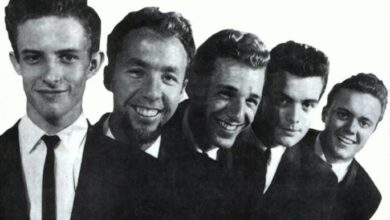Timeless Elegance: The Enigmatic Legacy of Procol Harum’s ‘A Whiter Shade of Pale’
In the spring of 1967, Procol Harum released “A Whiter Shade of Pale,” a debut single that would become an anthem of the Summer of Love. The song’s ethereal quality, marked by a soulful blend of vocals, haunting organ melodies, and poetic lyrics, resonated with audiences globally. Its impact was immediate, topping charts in the UK for six weeks and gaining immense popularity worldwide, establishing Procol Harum as a formidable name in rock history.
The inspiration for the song’s title came from a casual conversation overheard by lyricist Keith Reid. The phrase “a whiter shade of pale” struck Reid as evocative and enigmatic, inspiring a narrative steeped in surreal and dreamlike imagery. The lyrics, rich with metaphor and obscure references, have captivated listeners for decades, inviting personal interpretations and discussions about their deeper meaning.
The song’s Baroque-inspired melody, played on a Hammond organ by Matthew Fisher, is one of its most defining features. Drawing influence from Johann Sebastian Bach’s works, the organ riff lends a timeless elegance to the composition. The descending bassline and Gary Brooker’s soulful vocal delivery further enhance the song’s haunting and melancholic atmosphere, making it a masterpiece of musical fusion.
Upon its release, the song quickly became a cultural phenomenon. Its introspective tone and otherworldly quality struck a chord with the counterculture movement of the 1960s, symbolizing a longing for deeper meaning in a turbulent era. Its widespread acclaim led to sales of over ten million copies globally, making it one of the best-selling singles of all time.
The enigmatic lyrics have been the subject of endless analysis, with interpretations ranging from romantic longing to psychedelic exploration. Some see the song as a tale of unrequited love, while others view it as a reflection of spiritual awakening or existential crisis. Keith Reid has often stated that the lyrics were meant to evoke emotions rather than convey a clear storyline, leaving their meaning intentionally open-ended.
Decades after its release, “A Whiter Shade of Pale” became embroiled in legal disputes. Matthew Fisher claimed a co-writing credit for his iconic organ contribution, arguing that it was integral to the song’s success. After years of litigation, he was granted co-authorship in 2009, a decision that underscored the complexities of creative collaboration in music.
The cultural legacy of the song is undeniable. It has been honored with numerous awards, including its inclusion in the Grammy Hall of Fame and recognition as one of the greatest British singles of all time. Its haunting melody and timeless appeal ensure its place in the pantheon of rock classics, celebrated by fans across generations.
Over the years, the song has been covered by numerous artists, each bringing their unique interpretation to the timeless classic. Performers such as Annie Lennox and Joe Cocker have added their own artistic flair, showcasing the song’s versatility and universal resonance. Each rendition reflects its enduring influence and the deep emotional connection it fosters.
The phrase “a whiter shade of pale” has transcended its origins, becoming a part of the English lexicon. It is often used metaphorically to describe pallor or a sense of diminished vitality. This linguistic adoption highlights the song’s profound impact on language and culture, further cementing its place in history.
Live performances of “A Whiter Shade of Pale” often included additional verses not present in the original recording. These extended versions gave audiences a deeper insight into the song’s lyrical depth and offered a fresh perspective on its narrative. They have become a treasured part of Procol Harum’s concert repertoire.
The song’s influence extends beyond music into film, television, and advertising, where it has been used to evoke nostalgia or underscore dramatic moments. Its universal appeal ensures that new generations continue to discover and appreciate its haunting beauty, keeping its legacy alive.
Gary Brooker reflected on the song’s creation as a deliberate effort to blend classical influences with contemporary rock, an innovative approach for its time. This fusion not only defined the song’s unique sound but also set a benchmark for musical experimentation that inspired countless artists.
The innovative structure and haunting melody of “A Whiter Shade of Pale” have made it a source of inspiration for many musicians. Its distinctive organ riff and lyrical depth serve as a reference point for artists seeking to create music that resonates on an emotional and intellectual level.
In the decades since its release, the song has remained a staple of classic rock. Its haunting quality and emotional depth continue to captivate audiences, ensuring its place in music history. Whether experienced through the original recording or through reinterpretations, it stands as a testament to the enduring power of music to move and inspire.
Today, “A Whiter Shade of Pale” is celebrated as a timeless masterpiece. Its combination of haunting melody, enigmatic lyrics, and emotional resonance ensures its relevance in an ever-changing musical landscape. As one of rock music’s most iconic songs, it continues to inspire wonder and admiration, a true classic that defies the passage of time.



